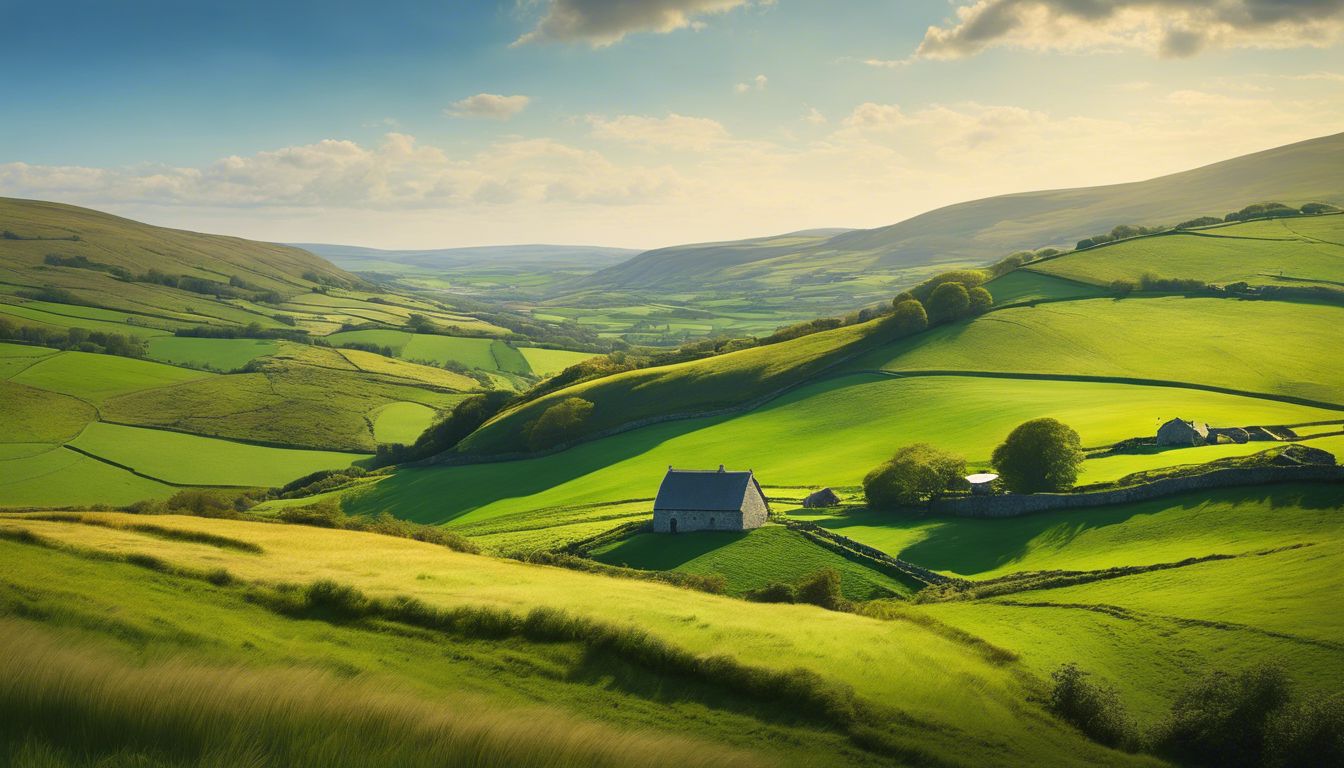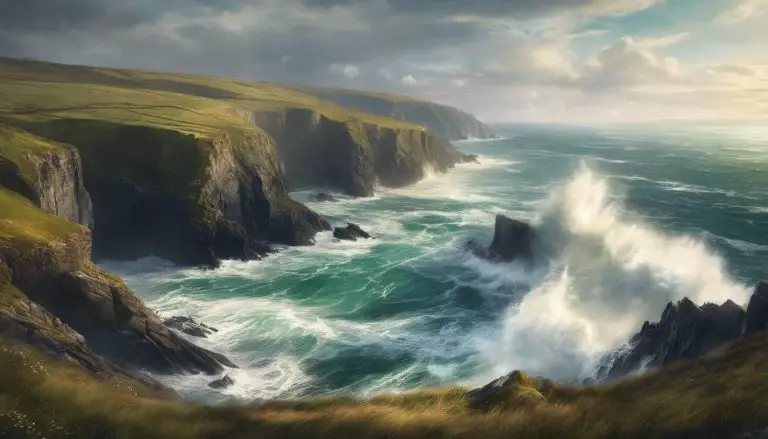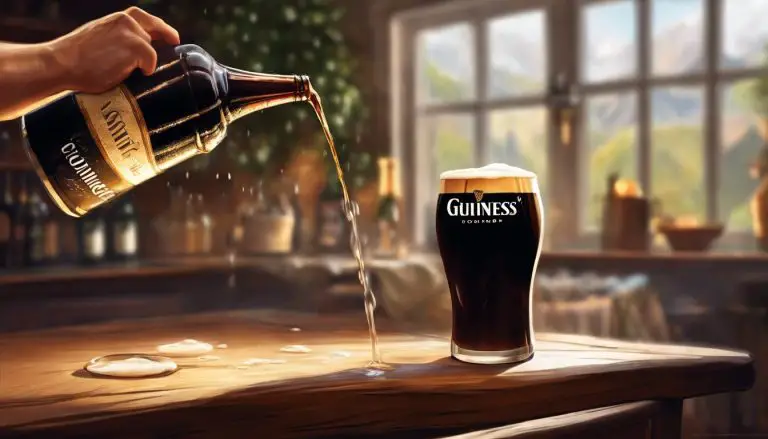Does Ireland Have Snakes? Exploring the Myth of Ireland’s Snake-free Reputation
Welcome to the story of Ireland’s snakes, or rather, why there aren’t any. This tale is about how Ireland became known for having no slithering serpents. Long ago, people said Saint Patrick chased all the snakes away.
But scientists now tell us this isn’t true. There have been no snakes in Ireland since ice covered the land many years ago.
The legend of Saint Patrick is a big part of why we think Ireland has no snakes. It’s really about old beliefs changing when Christianity came to Ireland. Countries like New Zealand and Madagascar also have no native snakes just like Ireland.
Even though you won’t find wild snakes in Irish fields or forests, some folks in Ireland keep them as pets. There was even a surprise snake found near Loch Ness once! So while you might come across a pet snake, it’s not from around here.
Ireland’s story without these reptiles makes its nature very special indeed. Let’s slither into more about why these creatures are missing from the emerald isle!
Key Takeaways
- St. Patrick did not actually chase snakes out of Ireland, as the country had no snakes even before he arrived in the 5th century AD.
- Ireland’s lack of snakes is due to its cold climate during the Ice Age and being cut off from other lands by rising seas.
- Other islands like New Zealand and Madagascar also have no native snakes, mostly because of their isolation.
- While wild snakes don’t exist in Ireland, pet snakes are legal to own there.
- A sighting at Loch Ness sparked rumors of a serpent – like creature, but it remains unproven and adds to Ireland’s legends.
The Myth of Ireland’s Snake-Free Reputation
Many believe that St. Patrick drove out all the snakes from Ireland, although historical evidence shows no record of snakes being in Ireland before the last Ice Age. The serpent-free reputation of the island has been a long-standing myth.
History of St. Patrick Driving Out Snakes
St. Patrick is a key figure in Irish history, but he didn’t really drive snakes out of Ireland. This story has grown into a powerful myth over centuries. People often say Saint Patrick chased all the snakes into the sea after they attacked him during a 40-day fast.
However, scientists tell us this tale isn’t true because there were never any snakes in Ireland to begin with.
The legend mixes faith and old stories from long ago. Long before St. Patrick’s time, during the Ice Age, it was too cold for snakes to live on the island. As ice melted and seas rose, water cut Ireland off from other lands that did have snakes.
So by the time St. Patrick arrived in the 5th century AD, he found no serpents to banish—nature had already done that job! The myth may symbolize how he converted pagans away from their serpent-worshiping religions though.
No Snakes in Ireland Before the Last Ice Age
Ireland was free from snakes long before the last ice age. The country’s snake-less status dates back to the end of the glacial period, which made life unlivable for snake populations in Ireland.
Geological factors and multiple ice ages contributed to Ireland being devoid of snakes for centuries, solidifying its reputation as a serpent-free land.
The absence of snakes in Ireland is not just folklore but also a scientific reality rooted in the country’s geographical and historical context. There were no poisonous or grass snakes inhabiting Ireland even before the last ice age, contributing to its unique wildlife landscape.
Other Snakeless Islands
New Zealand and Madagascar are both well-known for their lack of snakes, despite being very different in terms of size and location. This begs the question – what makes these islands snake-free?.
New Zealand
New Zealand, like Ireland, is also famous for its snake-free status. The absence of snakes in New Zealand is attributed to its isolated location and strict biosecurity measures. This unique feature has led to a diverse ecosystem with native flora and fauna flourishing without the presence of snakes.
Despite being home to various other reptiles, such as skinks and geckos, New Zealand remains free from any venomous serpents.
Madagascar
Moving on to Madagascar, another snake-free island that shares a similar reputation with Ireland. Unlike Ireland, the absence of snakes in Madagascar is believed to be due to its geographical isolation and unique ecosystem.
The island’s diverse wildlife has evolved without the presence of snakes, leading to a lack of native snake species. This makes Madagascar an intriguing parallel to Ireland in terms of being a serpent-free haven.
Ireland and Madagascar share the rare status of being free from snakes, each for their own unique reasons. While Ireland owes its snakeless condition to historical and geological factors, Madagascar attributes its freedom from snakes to its isolated evolution within an extraordinary ecological setting.
The Possibility of Snakes in Ireland
Pet snakes are legal in Ireland, and there have been reports of snake discoveries in places like Loch Ness. Despite the myth, it is possible for snakes to exist in Ireland.
Pet Snakes Are Legal
Pet snakes are legal in Ireland, adding to the fascination for snake enthusiasts. There are no specific laws prohibiting them, allowing individuals with an interest in reptiles to responsibly keep pet snakes.
This has contributed to a growing community of snake enthusiasts who value and appreciate these fascinating creatures as part of their lives.
Snake lovers in Ireland can legally own and care for various species without facing any legal restrictions or obstacles. It provides an opportunity for people to engage with these captivating animals while abiding by regulations that ensure the welfare of both snakes and their owners.
Snake Discovery in Loch Ness
While pet snakes are legal in Ireland, the country is known for its lack of wild snake populations. However, an intriguing discovery was made at Loch Ness. In 2015, a tourist spotted a mysterious creature swimming in the lake and managed to capture it on video.
This led to widespread speculation about whether it could be a serpent-like creature living in the depths of Loch Ness.
Researchers have debated over the years about what this elusive creature might be, with some suggesting it could potentially be a large eel or even a prehistoric marine reptile. The unending mystery surrounding this sighting has only added to the allure and fascination of Ireland’s wildlife and folklore enthusiasts.
Conclusion: The Truth Behind Ireland’s Lack of Snakes
In conclusion, Ireland’s snake-free reputation is not just a myth but a scientific reality. St. Patrick’s role in driving out snakes is purely legendary, with geographical and historical factors playing a more significant role.
The absence of snakes has made Ireland unique among other nations, sparking fascination and folklore. Despite pet snakes being legal and occasional discoveries, the Emerald Isle continues to be mercifully free from these slithering creatures, adding to its charm and allure.
FAQs
1. Is it true that Ireland has no snakes?
Yes, it’s true! Ireland is known for its snake-free reputation, and you won’t find any native poisonous snakes roaming around.
2. Why does everyone say St Patrick got rid of the snakes in Ireland?
People say St Patrick chased away all the snakes long ago, which is part of the legend why there are no serpents in Ireland.
3. Did anyone else besides St Patrick help keep Ireland serpent-free?
Some stories mention St Columcille as another reason why we think of Ireland as a place without snakes. But mostly, people remember St Patrick for this.
4. Are there any dangerous reptiles at all in Ireland like spiders or others?
While you won’t find venomous snakes in Ireland, watch out for different kinds of spiders that do live there! Not to worry though; none are too scary or harmful.







